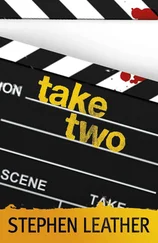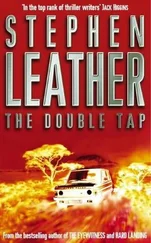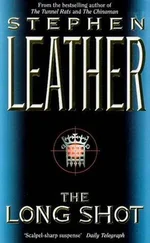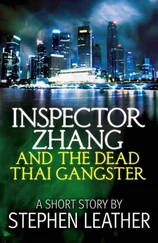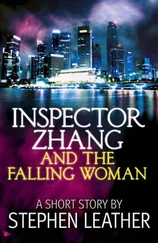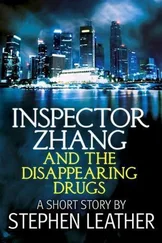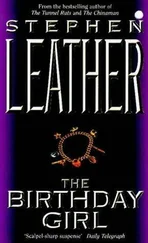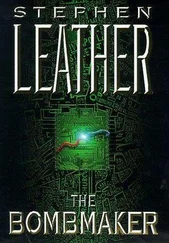Contents
Also by Stephen Leather
Title Page
Copyright
Dedication
Chapter 1
Chapter 2
Chapter 3
Chapter 4
Chapter 5
Chapter 6
Chapter 7
Chapter 8
Chapter 9
Chapter 10
Chapter 11
Chapter 12
Chapter 13
Chapter 14
Chapter 15
Chapter 16
Chapter 17
Chapter 18
Chapter 19
Chapter 20
Chapter 21
Chapter 22
Chapter 23
Chapter 24
Chapter 25
Chapter 26
Chapter 27
Chapter 28
Chapter 29
Chapter 30
Chapter 31
Chapter 32
Chapter 33
Chapter 34
Chapter 35
Chapter 36
Chapter 37
Chapter 38
Chapter 39
Chapter 40
Chapter 41
Chapter 42
Chapter 43
Chapter 44
Chapter 45
Chapter 46
Chapter 47
Chapter 48
Chapter 49
Chapter 50
Chapter 51
Chapter 52
Chapter 53
Chapter 54
Chapter 55
Chapter 56
Chapter 57
Chapter 58
Chapter 59
Chapter 60
Chapter 61
Chapter 62
Chapter 63
Chapter 64
Chapter 65
Chapter 66
Chapter 67
Chapter 68
Also by Stephen Leather
Pay Off
The Fireman
Hungry Ghost
The Chinaman
The Vets
The Long Shot
The Birthday Girl
The Double Tap
The Solitary Man
The Tunnel Rats
The Bombmaker
The Stretch
Tango One
The Eyewitness
First Response
Takedown
The Shout
Last Man Standing
The Runner
Spider Shepherd thrillers
Hard Landing
Soft Target
Cold Kill
Hot Blood
Dead Men
Live Fire
Rough Justice
Fair Game
False Friends
True Colours
White Lies
Black Ops
Dark Forces
Light Touch
Tall Order
Short Range
Slow Burn
Jack Nightingale supernatural thrillers
Nightfall
Midnight
Nightmare
Nightshade
Lastnight
If you’d like to find out more about these and future titles, visit www.stephenleather.com.
THE HUNTING
Stephen Leather
www.hodder.co.uk
First published in Great Britain in 2021 by Hodder & Stoughton
An Hachette UK company
Copyright © Stephen Leather 2021
The right of Stephen Leather to be identified as the Author of the Work has been asserted by him in accordance with the Copyright, Designs and Patents Act 1988.
All rights reserved.
No part of this publication may be reproduced, stored in a retrieval system, or transmitted, in any form or by any means without the prior written permission of the publisher, nor be otherwise circulated in any form of binding or cover other than that in which it is published and without a similar condition being imposed on the subsequent purchaser.
All characters in this publication are fictitious and any resemblance to real persons, living or dead, is purely coincidental.
A CIP catalogue record for this title is available from the British Library
eBook ISBN 978 1 529 34523 0
Hodder & Stoughton Ltd
Carmelite House
50 Victoria Embankment
London EC4Y 0DZ
www.hodder.co.uk
For Alana Jane and Zula
CHAPTER 1
The overhead sun was relentless as it burnt down through the cloudless sky. Jon Van der Sandt had a wide-brimmed hat shielding his face and impenetrable Oakley sunglasses protecting his eyes but there was nothing he could do to make the air that he breathed any cooler. He stopped and took a swig from his water bottle.
‘Not far now,’ said his guide, as if reading his mind. The guide was in his late twenties, almost half Van der Sandt’s age, but he had been born in Botswana and knew every inch of the thirty thousand-acre game farm. His name was Paul Falkner and his family had owned the farm for three generations. He was a good six inches taller than Van der Sandt, lanky with barely an ounce of fat on him, his hair bleached blond by the sun and his skin the colour of polished mahogany. Like Van der Sandt he was sporting a wide-brimmed floppy hat, though there was a racy snakeskin band around his. Both men were wearing olive shirts and shorts and Timberland boots, and hunting vests loaded with ammunition.
‘I’m good,’ said Van der Sandt. He didn’t want the fact that he had stopped for a drink to suggest weakness. He was tired, but after five hours of walking through the bush, who wouldn’t be? He knew that many Russian hunters, and lately the Chinese, preferred to be helicoptered in close to their prey. He had even heard stories of them mowing down elephants and rhinos from the air, not even bothering to land. That wasn’t the way that Van der Sandt hunted. He went in on foot with only what he could carry. Man against beast and let the strong survive.
He placed the water bottle back in his belt and Falkner began walking again. They were on the track of a small herd of elephants: two males, five females and two juveniles. Falkner was following their trail and figured that they were a mile ahead, maybe less.
Van der Sandt was paying handsomely for the hunt, and he had already been rewarded with a white rhino and three buffaloes, one of which had the biggest spread of horns that he had ever seen. The three-day hunting holiday was costing twenty thousand dollars, which included the necessary licences, but each kill added to the bill. The rarer the animal, the higher the price, and in the case of the buffalo, the massive spread of the horns had meant the kill came with a thirty thousand-dollar price tag. The elephant they were tracking could easily cost more than twice that; it depended on the length of the tusks. According to Falkner, it was a fifty-five-year-old bull that weighed close to seven tons. If that were true, it would be the largest elephant Van der Sandt had killed, and Van der Sandt had killed dozens.
He was carrying his gun and ammunition. Some hunters had a bearer following behind with their gear in the way that golfers used caddies, but Van der Sandt was old school. If he could have done without Falkner he’d have gone into the bush alone, but he wasn’t familiar with the area and it would have been foolhardy in the extreme to go solo.
The rifle Van der Sandt was holding was a double-barrelled sidelock made by William Evans of London, and it was his pride and joy. It had been handmade to his requirements and was chambered for the .500 Nitro Express cartridge, the favourite ammunition of big game hunters around the world. The gun had taken almost three years to produce and the action plates and body were engraved with scenes from his favourite hunting grounds in Africa and Asia, with the initials of his wife and children incorporated into the design. He had never told his wife what he had paid for the gun – close to two hundred thousand dollars – but he considered it money well spent. It was perfectly balanced and the eleven-pound weight helped deal with some of the recoil. Not all of it, by any means, and firing the gun meant putting a lot of weight on the front foot and holding the stock tight against the shoulder. It wasn’t a gun for amateurs – if you weren’t careful you could pull the trigger and end up flat on your back. And if your shot had just missed a seven-ton elephant, a mistake like that could easily be fatal.
A double rifle was vital just in case the first shot wasn’t a killing shot. An elephant would charge if it wasn’t killed instantly and having the second cartridge ready to fire could be a life saver. The new breed of hunters tended to prefer pump-action guns with five or more cartridges in the magazine, but Van der Sandt was contemptuous of them. If two shots wasn’t enough to bring down your quarry, you had no business being a hunter. And it wasn’t unknown for pump-action guns to jam. A double never jammed. You pointed it, you braced yourself, and you pulled the trigger. Job done. And you had a back-up shot ready to go. Van der Sandt had requested double triggers. He could have gone with a single trigger but the mechanism was more complicated and more likely to fail.
Читать дальше

